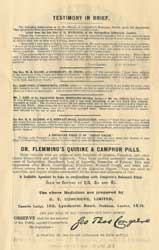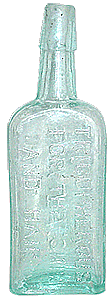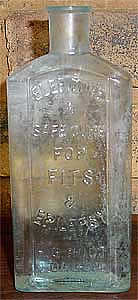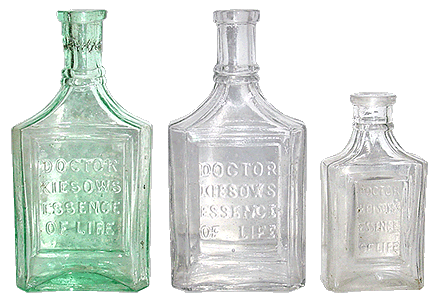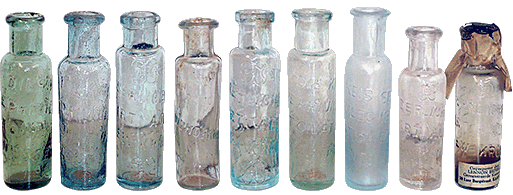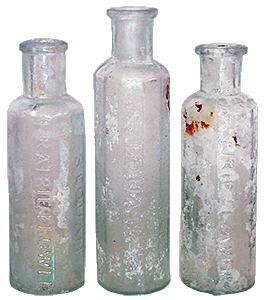At the turn of the previous century hundreds of doctors and charlatans were releasing cures, medicines, ointments and salves on an unsuspecting public. Backed up by often extravagant claims, these cure-alls were looked to by the working classes to cure a multitude of diseases and ailments from the common cold to cancer.

Modern day research and forensic testing is proving that some of the faith placed in these potions was indeed, not completely misplaced and Holloways Ointment, for example, has been proved to contain several beneficial ingredients.
Many medicinal products, some of which started out as quack cures, have proved their efficacy over the years and have come to be regarded as bona-fide remedies.
|
|
 Dongre's Balamrit. An older very crudely embossed bottle. |
|
||
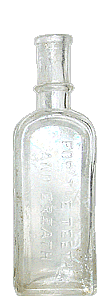 Van Buskirk's / Fragrant Sozodont / For the teeth and breath. Unuasal tapering shape. |
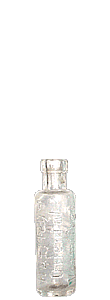 Hartleys Oriental Vermifuge Depicting an elephant in Red Cross livery. |
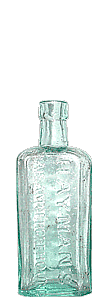 Haymans Balsam of Horehound |
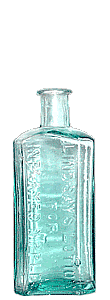 Lindsay's Lotion for Inflamed Nipples. (Enough said!) |
||
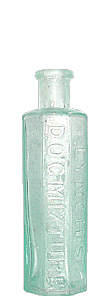 Lynch's Dog Mixture. Note the similarity in bottle shape to Benbow's |
Doctor Kiesows
Essence of Life. |
||||
Kronessents Few South African diggers have not come across these delightful little bottles with their spiral writing and unusual logo. From honey-brown through green, turquoise, auqa and clear glass with both flared and finished lips, hand and machine made, these little gems must surely be scattered around the world.
Some of these bottles look so old that one would expect pontil scars.
The later bottles pictured above, are made more interesting by some small abnormalities. From the left, the first bottle is mispelled KRDNESSENTS, bottle no.2 is embossed ALTOHATICHE instead of ALTONATICHE and also bears a slightly different logo. Bottle no.4 has steeply spiralled line of script "MENADESCHEN WUNDERKRONESSENTZ". Bottle no.5 has a very different emblem above and below the script and bottle no.8 also bears a spelling mistake ALTOHATICHE and again a slightly different logo. The last bottle has label and contents (evaporated) and is the newest of all of them. The variety of logo designs on these bottles is intriguing. Could there be any particular reason for this? Under the heading "Wonder Drug Bought Title... Shoemaker from Altona becomes successfull physician" a very interesting article on Kronessents appeared in a German publication, Archaeology in and around Hamburg.We are currently working on a English translation. From ouir limited knowledge of German it appears that this product hit the market in around 1774 and was still being produced on the same premises in 1928. Truly one of bottle collecting's lesser known interesting stories coming soon. |
|||||
 Powell's Balsam of Aniseed. An unuasal triangular shape bottle with inset panel. |
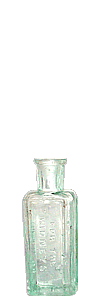 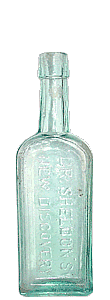 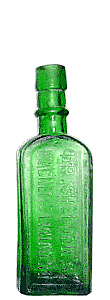 A group of three Dr. Sheldon's products.. Gin Pills for the Kidneys, New Discovery / Boston USA / Sydney, NSW and Magnetic Liniment / Cape Town SA / Boston USA. |
||||
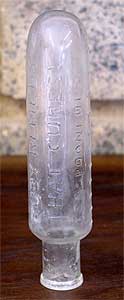 RUBY REMEDY / THAT CURES! Not too sure what this cures? |
 Sandow's (Logo) Embrocation. Embossed on back Rd No 378103 (c 1884) |
 Fredk. W. Hale / Natures Herbal Remedies London. |
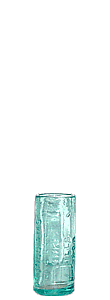 Dr. Williams Pink Pills for Pale People. In glass for export. |
||
Sequah
Sequah Prairie Flower. These non-descript aqua bottles found in late 19th century dumps around South Africa and in the UK, Europe, Australia and other countries have an interesting history. William Hartley assumed the name Sequah and started selling nostrums from a wagon in Portsmouth, England in 1887. The business was so successful that by 1890 there were 23 Sequahs on the road – a prosperous franchise system had been established. All the Sequahs used similar techniques. They dressed as cowboys or American indians, and travelled from town to town with a guilded wagon and a brass band, and set up in town squares or the market place. Sequah invited people to have their teeth extracted free while the band played, and when he had the crowds attention, he started his sales pitch to cajole the crowds to buy his products Sequah Prairie Flower Mixture and Sequah Oil. An analysis of the oil showed that it consisted of turpentine, fish oil and a few drops of camphor – a quack remedy to be sure! At least 3 Sequahs practised in South Africa in the 1890s. The first to arrive started in Cape Town in October 1890 and travelled in a clockwise direction by train and wagon via Kimberley and Johannesburg, stopping at many towns en route. He sailed from Durban in December 1891. Another Sequah gave his first performance in Port Elizabeth in December 1890 and travelled extensively in the Eastern Cape with his entourage. Research on the Sequahs in South Africa has been done by Ethleen Lastovica ( lastoaj@mweb.co.za ) who hopes to publish a book on them soon. |
|||||
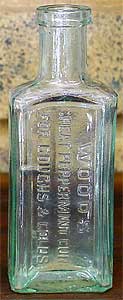 Woods Great Peppermint Cure / For Coughs and Colds. |
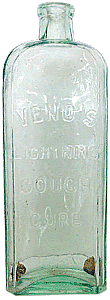 Veno's Lightning Cough Cure. An unuasal large size. |
|
|||


